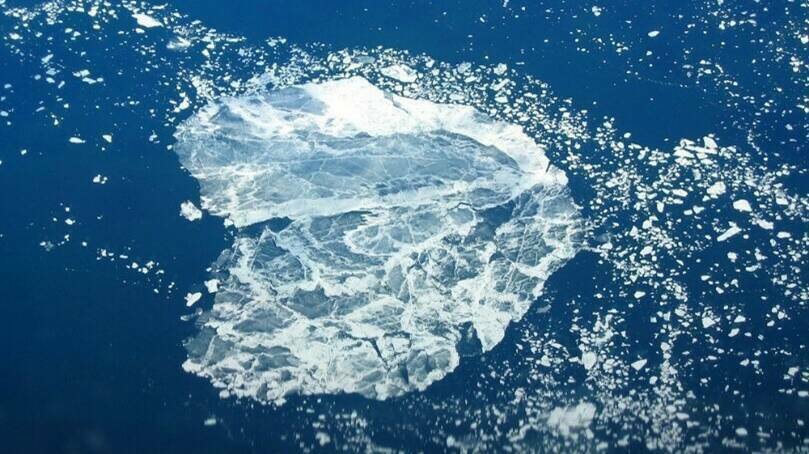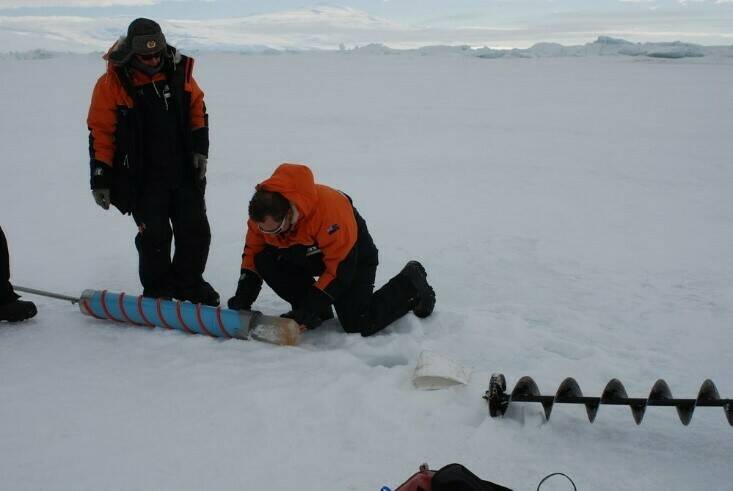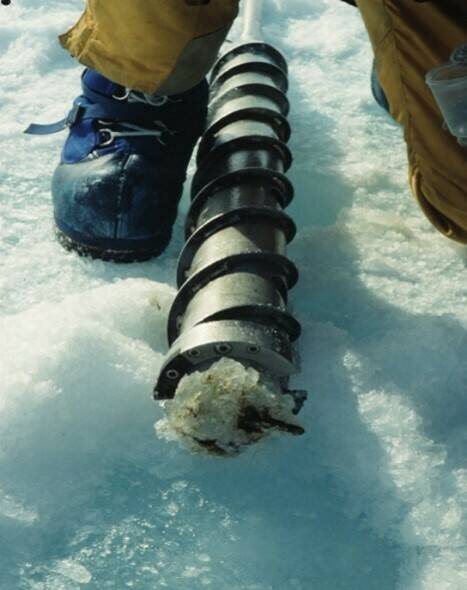On the Precipice

The following article summarises a recent report drawing on work by GNS Science—Te Pū Ao, Te Herenga Waka—Victoria University of Wellington, the Antarctic Science Platform and researchers in many other New Zealand and overseas organisations, as well as publications from the Intergovernmental Panel on Climate Change.
A target for humanity
1.5ºC warmer than pre-industrial times. A target set at the 2015 Paris Agreement this is the level of warming our world can cope with to mitigate against the worst effects of climate change. If the planet warms to 2ºC, the risks of environmental destruction and social disruption increases, but warming past 2ºC spells irreversible and catastrophic change to our planet and the systems we rely on for life. We are currently on track to experience warming of 2.7ºC by the end of the century.
Two of the most significant places that determine what our future could look like are the poles. Most of the freshwater on earth is locked within the polar ice sheets covering Antarctica and Greenland with the Antarctic ice sheet being the largest in the world, accounting for 62% of our freshwater. Understanding the role of the Antarctic ice sheet and its interaction with global systems is of paramount importance to inform us about the different futures we may experience depending on the level of planetary warming we face.
The importance of the poles
The latest report summary from the Intergovernmental Panel on Climate Change (IPCC) clearly attributes ice loss and glacial melt in recent years to human influence. The report predicts that melting sea ice, loss of seasonal snow cover and thawing permafrost in the Arctic Circle will continue under all warming scenarios, whether we limit ourselves to 1.5ºC or not.
Like the Greenland ice sheet, the Antarctic ice sheet is also losing mass at an accelerating rate, but it hasn’t lost as much as the Arctic. The oceans are very important for absorbing carbon dioxide. Since 1900, the oceans have absorbed 93% of the additional warming on earth, with the majority of absorption happening in the Southern Ocean where ocean systems rely greatly on the Antarctic ice sheet. Without this absorption, the world would’ve already warmed by 35ºC, as opposed to the increase of 1.2ºC we are currently experiencing.
Modelling the past, predicting the future
It is very difficult to predict what our future might look like, but Antarctic scientists use models to explore the different possible climates we may experience based on how much we can limit warming. They do this in two ways. First, they can monitor what is currently happening to the ice sheet to make sure their models capture key processes. For example, today we see warmer waters flowing under the Antarctic ice shelves, causing the Western sheet to melt. This means the sheet is thinning and is less able to confine ice grounded on land, meaning this ice is exposed to warmer ocean currents. If these warmer currents reach the underbelly of the shelves there could be a major impact on how fast the ice is melting. This process is currently being studied to see what might happen next, but the best way to address what our future might look like is to look into the past.
Scientists are working to understand what happened to the ice the last time the world was as warm as it will become (under the assumption we achieve the Paris targets) 125,000 years ago. One of the ways this happens is by drilling down into the ice to analyse rock and core samples from this time period, allowing scientists to capture records of past climatic conditions and use this information to model the future.


Tipping points
Another important outcome from the latest IPCC report is the observation that we can’t rule out the possibility of tipping points occurring in Antarctica. This outcome involves the triggering of glacial processes called Marine Ice Cliff Instability (MICI) and Marine Ice Sheet Instability (MISI). The key point of both processes is that even slow, gradual warming could eventually trigger a tipping point causing the ice sheets and cliffs to become unstable. This would set in motion a scenario where the cliffs and sheets would rapidly break, causing further melting and irreversible sea level rise for hundreds of years. Our best chance to avoid an event like this occurring is to cut our emissions immediately and determine the climate conditions which might cause a trigger point like this to occur.
Some of the impacts of climate change are easier to spot than others. We are already experiencing a greater frequency of extreme weather events linked to a changing climate, but some impacts are occurring slower and are harder to detect. One of these effects is sea level rise.
Our rising seas
Between 75,000 and 18,000 years ago when large parts of the Northern hemisphere were covered in ice, the sea level in Aotearoa was 120 metres lower than it is now. However, if you look back further to when the global temperature was 1.5ºC warmer than pre-industrial times, the New Zealand sea level was between six and nine metres higher than it is currently. The sea level in New Zealand had already risen by approximately 20cm by the beginning of the 20th century but the rate the ocean is rising is accelerating.
There is already too much heat in the global system to stop further sea level rise occurring, but we can limit how much the sea level rises. On the current trajectory, the seas around our coasts will have risen by more than 1 metre by 2100, causing a massive increase in the frequency of coastal flooding. Although some further sea level rise is inevitable despite cutting emissions, if warming surpasses 1.5ºC we may reach a tipping point event for the Antarctic ice sheet, triggering unstoppable damage to the climate and ocean systems that govern our lives.
New research from New Zealand scientists has found that at the current levels of warming, large amounts of meltwater from both major global ice sheets is set to enter the oceans in the decades to come. This confirms other findings that convey that this meltwater would form a less salty layer on the ocean surface, causing more sea ice to form as freshwater freezes more easily. This newly formed sea ice sitting on the surface of the ocean and the less salty water layered beneath it would have an insulating effect on the earth, creating a feedback loop which would accelerate Antarctic ice melt even further.

Keeping the balance
However, we still don’t know everything about all the interactions between the climate, the oceans and Antarctica. The Antarctic Circumpolar Current (ACC) is the largest ocean current on earth, encircling Antarctica and keeping it frozen. Further South of the ACC you will find Antarctic bottom water. This water is the coldest, saltiest, densest, and deepest water on earth. It occupies 30-40% of global ocean volume and is the main way that the ocean absorbs heat and carbon dioxide. In the past half century this water has gradually become warmer and fresher, diminishing its ability to absorb Co2. However, this ability has recently bounced back and scientists are still debating why.
The planet is a series of intertwined complex systems that need to be kept in balance, there is really no such thing as isolated change. We need to understand the changes already occurring to these systems and the possible domino effects that could play out into other systems if we upset the balance too much. We still don’t know what specific climatic levels would cause a tipping point in the Southern Ocean, and there is still considerable uncertainly about the changes occurring at the poles and the implications of these for all life. What we do know is that these tipping points exist and that there is no coming back from them. Drastically reducing greenhouse gas emissions is our only chance to avoid the most destructive effects of climate change. It is our collective responsibility to be kaitiakitanga to our precious, fragile home. In 2015, the world set a target limiting warming to no more than 1.5ºC higher than pre-industrial times, this is a target that humanity cannot afford to miss.
